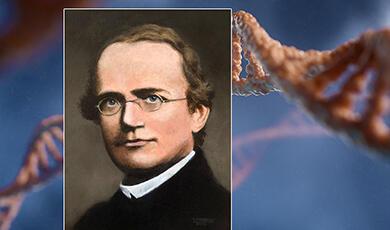Mendel’s green and yellow peas, he argued, were produced in ratios caused by ‘hidden determinants’. Their rediscovery at the beginning of the 20th century heralded the birth of genetics as a science.
During the 20th century these abstractions were first mapped on chromosomes (Morgan), and mutations dicovered (Muller), then understood as biochemically active (one gene one enzyme theory) and finally interpreted as sequences of DNA. The hidden determinants became visible as long strings of nucleotide bases (ACGT), and Crick formulated his ‘central dogma’ of the irreversible sequence by which DNA makes RNA makes protein. Only in the last twenty years has this dogma been challenged by the concept of the fluid genome, of DNA as but one actor in the economy of the cell.
Meantime, in the genetics clinic this immense technical and scientific change has transformed practice as the construction of risk is itself changed. Seeking to help families avoid giving birth to seriously genetically impaired babies had once turned on establishing family pedigrees and estimating probability. Now it is based on DNA testing, which, for some conditions (Huntington’s) offers not probability but certainty. The ethical and cultural problem is that this certainty is transferred to other DNA resuts (breast cancer) which only offer probability.


 Login
Login


